Feynman Path Integrals in Quantum Mechanics
Feynman Path Integrals in Quantum Mechanics
Feynman Path Integrals in Quantum Mechanics
- No tags were found...
Create successful ePaper yourself
Turn your PDF publications into a flip-book with our unique Google optimized e-Paper software.
can be a solution for the kernel as well. From periodicity follows the condition A n+1 = e iδ A n ,δ ∈ R. With A 0 = 1 we get A n = e <strong>in</strong>δ and can then write:∞∑K(ϕ 2 , t 2 ; ϕ 1 , t 1 ) = A n K n (ϕ 2 , t 2 ; ϕ 1 , t 1 ), (39)n=−∞where K n (ϕ 2 , t 2 ; ϕ 1 , t 1 ) is the kernel for all paths with n loops. For each K n we can carrythe Lagrangian 13 from S 1 to R and, for a free particle, use 14 (11). Insert<strong>in</strong>g this <strong>in</strong> (39)we obta<strong>in</strong> the kernel for a free particle mov<strong>in</strong>g on a circle:K(ϕ 2 , t 2 ; ϕ 1 , t 1 ) =∞∑n=−∞(I2πi(t 2 − t 1 )7 Statistical <strong>Mechanics</strong>) 1/2exp[<strong>in</strong>δ +]iI2(t 2 − t 1 ) ((ϕ 2 − ϕ 1 ) − 2nπ) 2In this last section we just want to see, how Statistical <strong>Mechanics</strong> and path <strong>in</strong>tegrals<strong>in</strong> <strong>Quantum</strong> <strong>Mechanics</strong> are related. The central object <strong>in</strong> Statistical <strong>Mechanics</strong> is thepartition function. It is def<strong>in</strong>ed by(40)Z := ∑ je −βEj= ∑ j〈j|e −βĤ|j〉 = Tre −βĤ, (41)where β = 1/k B T and E j is the energy of the state |j〉. Recall the alternative def<strong>in</strong>itionfor the kernel: K(x 2 , t 2 ; x 1 , t 1 ) = 〈x 2 |e −iĤ(t2−t1)/¯h |x 1 〉. Let’s see what happens, if wemake the substitution (t 2 − t 1 ) := −iβ¯h, where β is real:K(x 2 , −iβ¯h; x 1 , 0) = 〈x 2 |e −iĤ(−iβ¯h)/¯h |x 1 〉 = 〈x 2 |e −βĤ ∑ j|j〉〈j||x 1 〉 (42)= ∑ je −βEj 〈x 2 |j〉〈j|x 1 〉 = ∑ je −βEj 〈j|x 1 〉〈x 2 |j〉 (43)where we used the completenessrelation ∑ j |j〉〈j| = 1. Putt<strong>in</strong>g x = x 1 = x 2 and <strong>in</strong>tegrat<strong>in</strong>gover x, we get:∫K(x, −iβ¯h; x, 0)dx = ∑ ∫e −βEj 〈j| dx|x〉〈x| |j〉 = Z (44)j } {{ }=1This equation tells us how the propagator evaluated at negative imag<strong>in</strong>ary time isrelated to the partition function! This can be of practical use: It gives us a tool to easilycalculate the partition function of a physical system of which we know the path <strong>in</strong>tegral(kernel).8 SummaryThis was a short <strong>in</strong>troduction <strong>in</strong> the path <strong>in</strong>tegrals <strong>in</strong> <strong>Quantum</strong> <strong>Mechanics</strong>. I hope it gavea vague overview over the field even if the work is not complete at all. Especially thetreatment of measurements and operators <strong>in</strong> the path <strong>in</strong>tegral formalism was completelyleft out. But still the basic ideas and some applications were presented. In quantum fieldtheory path <strong>in</strong>tegrals will play an even more important role and I hope (for myself) thatthe acquired knowledge will be of use! In the last section it was shown how different fieldsof physics, such as statistical mechanics and <strong>Quantum</strong> <strong>Mechanics</strong>, can be l<strong>in</strong>ked by path<strong>in</strong>tegrals. A similar relation can be made between statistical field theory and quantumfield theory.13 We can do that, s<strong>in</strong>ce we can def<strong>in</strong>e a smooth mapp<strong>in</strong>g from R to S 1 . For details consult [5]!14 S<strong>in</strong>ce L = I ˙ϕ 2 /2, we just set m = I.8


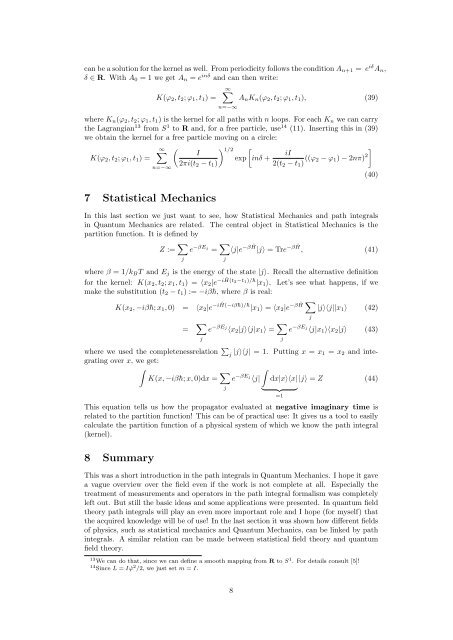
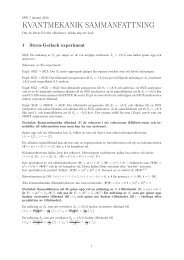

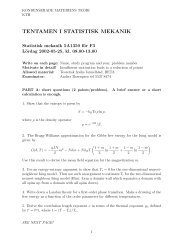
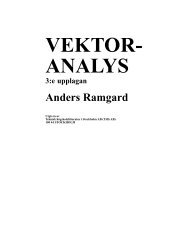
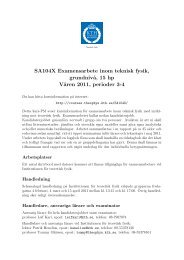

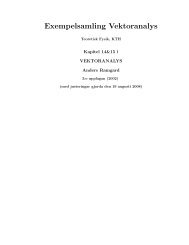

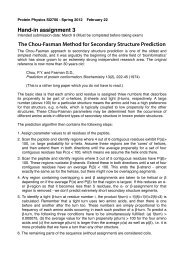

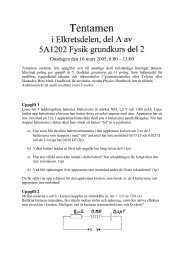
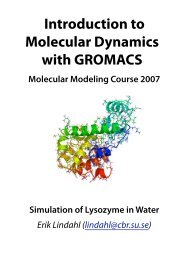
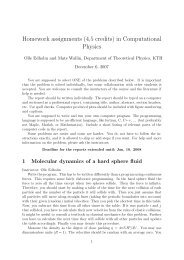
![[VAR]=Notes on variational calculus](https://img.yumpu.com/35639168/1/190x245/varnotes-on-variational-calculus.jpg?quality=85)